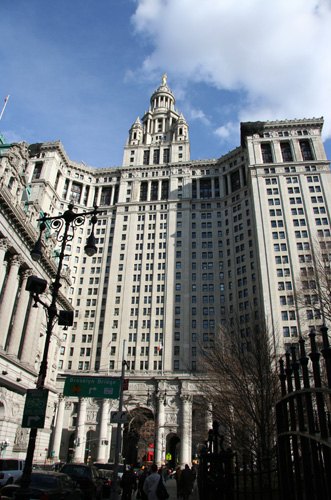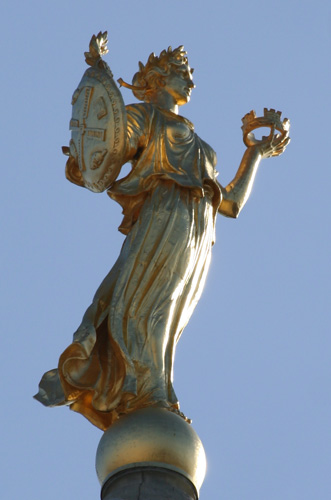I was in my car today, listening to 88.3 WBGO Newark, the local jazz station. They played a song that I’ve never heard before. I instantly recognized the singer as Billie Holiday, but forgot the name of the album that the velvet-voiced announcer mentioned after the song.
When I came home, I remembered reading about a website that supposedly allows you to find the name of the song and the album that you’ve heard on the radio. Unfortunately, I could not remember the name of the website, and a Google search of a couple of minutes turned fruitless. The idea of such a service always seems ridiculously useless to me, and even now when I actually had a chance to use it, it proved much simpler to just go to WBGO’s website and look it up there.
The song turned out to be “Comes Love”, a beautifully formulaic jazz standard. The lyrics tell you about the solvable problems and the one that isn’t.
Comes a rainstorm, put your rubbers on your feet;
Comes a snowstorm, you can get a little heat —
Comes love, nothing can be done.Comes a fire, then you know just what to do;
Blow a tire, you can buy another shoe —
Comes love, nothing can be done.Oh, don’t try hiding, ’cause there isn’t any use
You’ll start sliding when your heart turns on the juice.Comes a headache, you can lose it in a day;
Comes a toothache, see your dentist right away —
Comes love, nothing can be done.Comes a heat wave, you can hurry to the shore
Comes a summons, you can hide behind a door —
Comes love, nothing can be done.Comes the measles you can quarantine a room;
Comes the mousy, you can chase it with a broom —
Comes love, nothing can be done.That’s all brother, if you’ve ever been in love;
That’s all brother, you know what I’m speaking of.Comes nightmare, you can always stay awake;
Comes depression, you may catch another break —
Comes love, nothing can be done.
For some weird reason this reminded me of the horror of learning about computational theory and the Church–Turing thesis. Anyway, the song resonated with me somehow. Maybe it’s because the author of this song was Lew Brown of The Bronx, who turns out to be a former resident of Odessa, Ukraine known then as Louis Brownstein.
More importantly, the song was performed by one of the three best female jazz singers of all time, Billie Holiday. The the other two are Ella Fitzgerald and Sarah Vaughan, of course. The three of them generally are not considered equal. Fitzgerald is usually considered to be first, Holiday – second and Vaughan – third. Vaughan has the most beautiful and technically powerful voice, spanning from soprano to baritone. Holiday’s voice was not nearly as spectacular, and downright limited compared to Vaughan’s. But it had way, way more emotion and darkness. Ella Fitzgerald’s voice has both the range and technical perfection, as well as the deepness of emotion. She’s like a hybrid of the other two.
I, personally like Sarah Vaughan the best, followed by Billie Holiday. Vaughan’s voice makes me feel oh so good, and Holiday’s – so bad that it’s actually good. The way Billie Holiday sang “nothing can be done” totally made this song special for me. If there’s one person that knows about things about which “nothing can be done” – it’s Billie.
But I was wondering what the same song would sound like covered by Fitzgerald and Vaughan. Finally, a reason to buy something on iTunes, I thought, as three 99 cent songs makes more sense than three ten dollar cds, even when faced with the perspective of DRM limitations.
“An unknown error occurred (5002)” says iTunes store. Google search says – “nothing can be done”.
Update: iTunes relented and let me buy the songs. The contrast of the three renditions is exactly what I expected. The clarity and cleanliness of Lady Ella’s phrasing, the sexiness and faultless execution by Sassy (although a little spoiled by questionable orchestral arrangement) and the deep, desperate and dark emotional abyss of Lady Day’s voice, the ultimate finality in the words “nothing can be done.” Too bad I could not find a version by Diana Krall or Marilyn Maye.

